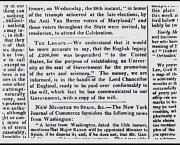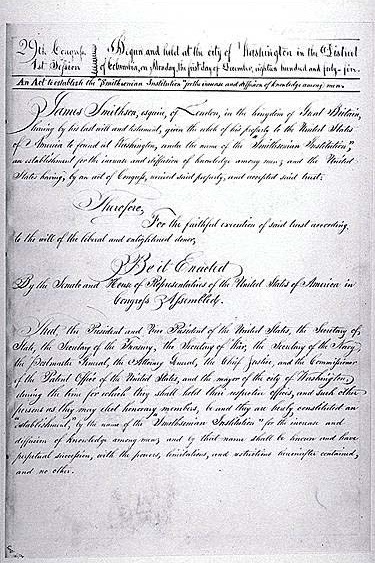All-American Compromise
Laying the Foundations: Early Schools of Thought
With few national institutions on which to model their thinking, many Americans built their plans for the Smithsonian around the notion of a national university.
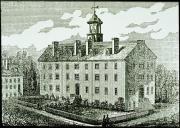
The debate moved quickly from, Should we create a national university? to What kind of a national university should we create?
"An institution for liberal and professional purposes, and for the promotion of original investigations?" -Steven Chapin
Steven Chapin, the president of Washington's Columbian College (now The George Washington University), advocated an institute of higher learning that would complement--but not compete with--his struggling young college.

Better Living through Science?
Thomas Cooper, an English-born physician and president of South Carolina College who was known for his radical political views, advocated a school that could help to improve social conditions through practical advances in science.
"I object to all belles-lettres, and philosophical literature, as calculated only to make men pleasant talkers. I object to medicine. . . . I object to law. . . . Ethics and politics are as yet unsettled branches of knowledge. -Letter from Thomas Cooper, president of South Carolina College, to Secretary of State John Forsyth, July 20, 1838


A Teacher's Training Institute?
Representative Robert Dale Owen of Indiana, who was influenced by his father, Robert Owen, founder of the utopian community at New Harmony, Indiana, spoke out for free public education. Owen introduced a bill that provided for a school to train teachers in natural science and primary education and to promote agricultural and chemical research.

A Place to Teach Natural History?
A professor at the University of Virginia, Robley Dunglison, wanted the bequest to be used for a school of natural history that would advance sciences of the type that interested Smithson, such as chemistry, geology, and mineralogy.

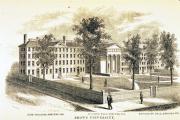
A University for the Classics?
Believing that societies often misused science and technology for military and other destructive purposes, Francis Wayland, the president of Brown University, suggested an institution that would teach only the classics.
Laying the Foundations: If Not a National University...? Debates, 1838-1846
"[Inquire of] persons versed in science, and familiar with the subject of public education, for their views as to the mode of disposing of the fund best calculated to meet the intentions of the testator and prove most beneficial to mankind." - Letter from U.S. President Martin Van Buren to Secretary of State John Forsyth, July 1838
Debates over what to do with the Smithson bequest eventually broadened to include more than the notion of a national university.
A National Museum?
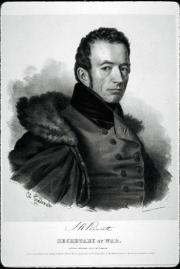
 In 1840 a group of politicians led by Representative Joel R. Poinsett (South Carolina) formed an advocacy group called The National Institute for the Promotion of Science. Poinsett and his followers wanted to use the Smithson bequest for a national museum to showcase relics of the young country and its leaders, to celebrate American technology, and to document the natural resources of the North American continent.
In 1840 a group of politicians led by Representative Joel R. Poinsett (South Carolina) formed an advocacy group called The National Institute for the Promotion of Science. Poinsett and his followers wanted to use the Smithson bequest for a national museum to showcase relics of the young country and its leaders, to celebrate American technology, and to document the natural resources of the North American continent.
Ultimately National Institute proponents were defeated by opposition from within the scientific community, which felt that scientists, not men of affairs, should control the direction of American science.
A National Scientfic Institute?

Alexander Dallas Bache, who was Benjamin Franklin's great grandson and Superintendent of the U.S. Coast Survey, championed the use of the Smithson bequest to support basic scientific research.
"I am most anxious that this fund should furnish means of scientific research in this country & that the institution should thus supply a want which all of us feel to exist unsupplied by our Colleges & Universities." —Smithsonian Regent, Alexander Dallas Bache, September 15, 1846
A National Observatory?
Believing that Smithson's bequest posed a great opportunity to advance American science, John Quincy Adams introduced legislation to use the Smithson fund for a national observatory.
"There is no richer field of science opened to the exploration of man in search of knowledge than astronomical observation." -Representative John Quincy Adams (Massachusetts), March 5, 1840
A National Library?
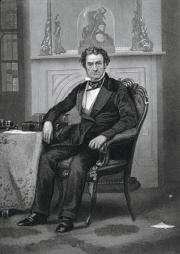 At a time when the Library of Congress consisted of a small collection of books housed in the U.S. Capitol, some scholars and legislators argued for a true national library. Senator Rufus Choate maintained that a national library would fulfill Smithson's mandate to diffuse knowledge more effectively than would a national university.
At a time when the Library of Congress consisted of a small collection of books housed in the U.S. Capitol, some scholars and legislators argued for a true national library. Senator Rufus Choate maintained that a national library would fulfill Smithson's mandate to diffuse knowledge more effectively than would a national university.
"Why should a German or an Englishman sit down to a repast of five hundred thousand books, and an American scholar, who loves the truth as well as he, be put on something less than half allowance?" —Senator Rufus Choate (Massachusetts), January 8, 1845
A National University, After All?
 Many people maintained their beliefs that the Smithson bequest should be applied toward a national university. Senator Asher Robbins, who had been a teacher, led a movement to consolidate several smaller colleges into a great national university.
Many people maintained their beliefs that the Smithson bequest should be applied toward a national university. Senator Asher Robbins, who had been a teacher, led a movement to consolidate several smaller colleges into a great national university.
"We have only to tread the path that led the Athenian to his glory, and to open that path to the youth of our country." —Senator Asher Robbins (Rhode Island), January 10, 1839
The Smithsonian Institution Is Created - August 10, 1846
 This U.S. Senate bill hopper offers clear evidence of how few bills actually became law. The upper shelves—which represent the final phases of legislative consideration—were built to accommodate the fewest bills.
This U.S. Senate bill hopper offers clear evidence of how few bills actually became law. The upper shelves—which represent the final phases of legislative consideration—were built to accommodate the fewest bills.
Bill proposals concerning the Smithsonian came from legislators, educators, and citizens from various walks of life. The final legislation included many of the ideas suggested during the decade of debate.
The compromise dropped the original idea of a national university. It specified that the Institution be faithful to Smithson's mandate for the "increase and diffusion of knowledge." The responsibility of interpreting and carrying out the legislation and Smithson's mandate fell to the Smithsonian's Secretary (or chief executive) and Board of Regents.
The bill establishing the Smithsonian Institution that President James K. Polk signed into law on August 10, 1846, represented ten years of negotiation and compromise.
Related Lesson Plans
- Lesson Plan Three: Making the Connections - Students will explore the national debate surrounding the acceptance of Smithson's gift, identify the divergent views of members of Congress, and examine the role of compromise in the American legislative process.

